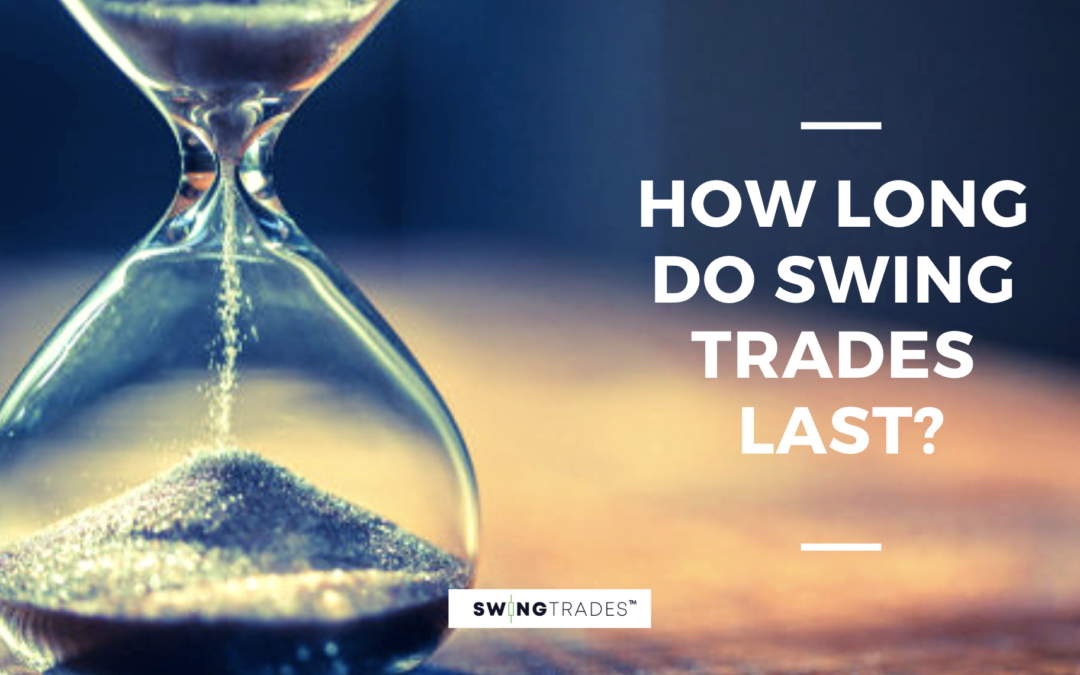Swing trading is a flexible trading method that doesn’t come with the demands of a super-short day trading timeline. But it doesn’t require the long holds of position trading, either. But for new traders, in particular, one question looms: How long do swing trades last ?
How long do swing trades last?
Turns out, that can be a tricky question to answer. The timeline is fairly variable for swing trades. These trades are usually less about striving for profits within a specific time period and more about making the most of the price swings resulting from a trend.
In this post, I’ll explain a bit more about swing trading to give you a better understanding of how long these trades can last. Keep reading to learn how swing trades can play out and some of the factors that can influence how long they may last.
What Is Swing Trading?
Swing trading is a trading style where the time frame is generally short, and there’s no set timeline. Swing trading positions can range anywhere from a short, overnight hold to holding a position in a stock for up to a few months.
How Is It Different From Other Types of Trading?
Let’s put swing trading in perspective … first, we’ll consider timelines of two other trading methods: day trading and position trading.
Day Trading
Day trading involves a very short time period, ranging from mere minutes to a day. But it never extends beyond one day. You always buy and sell within the same trading day. That’s why it’s called day trading.
Day trading is generally based on a news catalyst that causes a stock to have a very short-term gain (or loss for short-selling). Because these moves can make stocks extremely volatile, it’s crucial to have a stop loss (whether an order or mental) in place.
Position Trading
Position trading involves a long-term hold. On the short end, it might be for a few weeks or months, but it could even be for years.
A position trader isn’t necessarily concerned with short-term fluctuations in stock price, unless it’s a huge catalyst with the potential for a long-lasting impact. In general, a position trader is more than happy to hold onto a stock for a good long while, with the expectation that it will appreciate in value.
What’s the Timeline of a Swing Trade?
Here’s the short answer: There’s no exact time period for swing trades. But a swing trade will generally fall into the middle ground between day trading and position trading in terms of duration.
So if you opt for swing trading, you don’t have to hold a position for years and years, and you don’t need to watch every tick of a stock’s movement either.
In my personal experience, swing trades typically last anywhere from one week to several months, but again, this isn’t a set timeline that you can always count on. Every trade is different.
Focus on Your Goals
Rather than focusing on a specific timeline with swing trading, it’s more productive to focus on your trade goals. Ultimately, you’re hoping to take advantage of price changes or “swings” (that’s where this trading style gets its name).
With a swing trade, you generally enter into the trade based on a thesis or theory that the stock’s value will go up (or down, if short-selling). For me, this theory could be based on valuation, a comparison to similar companies, a specific event, or other factors.
I’ll enter a trade and hold the stock until an event occurs or it hits my target range. As long as my original thesis behind the trade doesn’t change, I’ll hold my position until it hits my target range and cut losses if it reaches my personal downside.
Swing Trading Requires Patience
It’s often said that patience is a virtue, and that’s certainly true of swing trading. While this flexible trading style can be manageable even if you hold a full-time job, it still requires a lot of patience.
If you enter a swing trade expecting quick results, you’re likely setting yourself up for frustration. So instead, shift your focus to crafting a solid trading plan with well-researched entry and exit points.
Then, be patient and watch the trade unfold.
SwingTrades With Paul Scolardi
I’m Paul Scolardi, a swing trader and the lead teacher at SwingTrades.
When it comes to trading, I always look to the future. Instead of following what’s trending right now, I try to figure out what the trends will be in the near future.
Over the years, I’ve developed a method of finding hot sectors before they peak by looking for earnings winners, watching sector leaders, and finding hot IPOs.
If you want to learn my techniques and try swing trading, join my SwingTrades program.
I focus on helping my students become self-sufficient traders by teaching them what I’ve learned over the years. As a student, you’ll learn my techniques for identifying potential momentum stocks. So far, I’ve taught over 1,400 students from 50 different countries and counting.
Trading takes lots of time, effort, and dedication. With any type of trading, there’s a level of risk, and it’s possible to lose your investment. So remember: Any trades you execute are at your own risk.
You CAN be better informed and learn the ways of the market. Check out how SwingTrades can help you make more educated trading decisions.
How long do your swing trades typically last? I’d love to hear about your experiences … Leave a comment!

